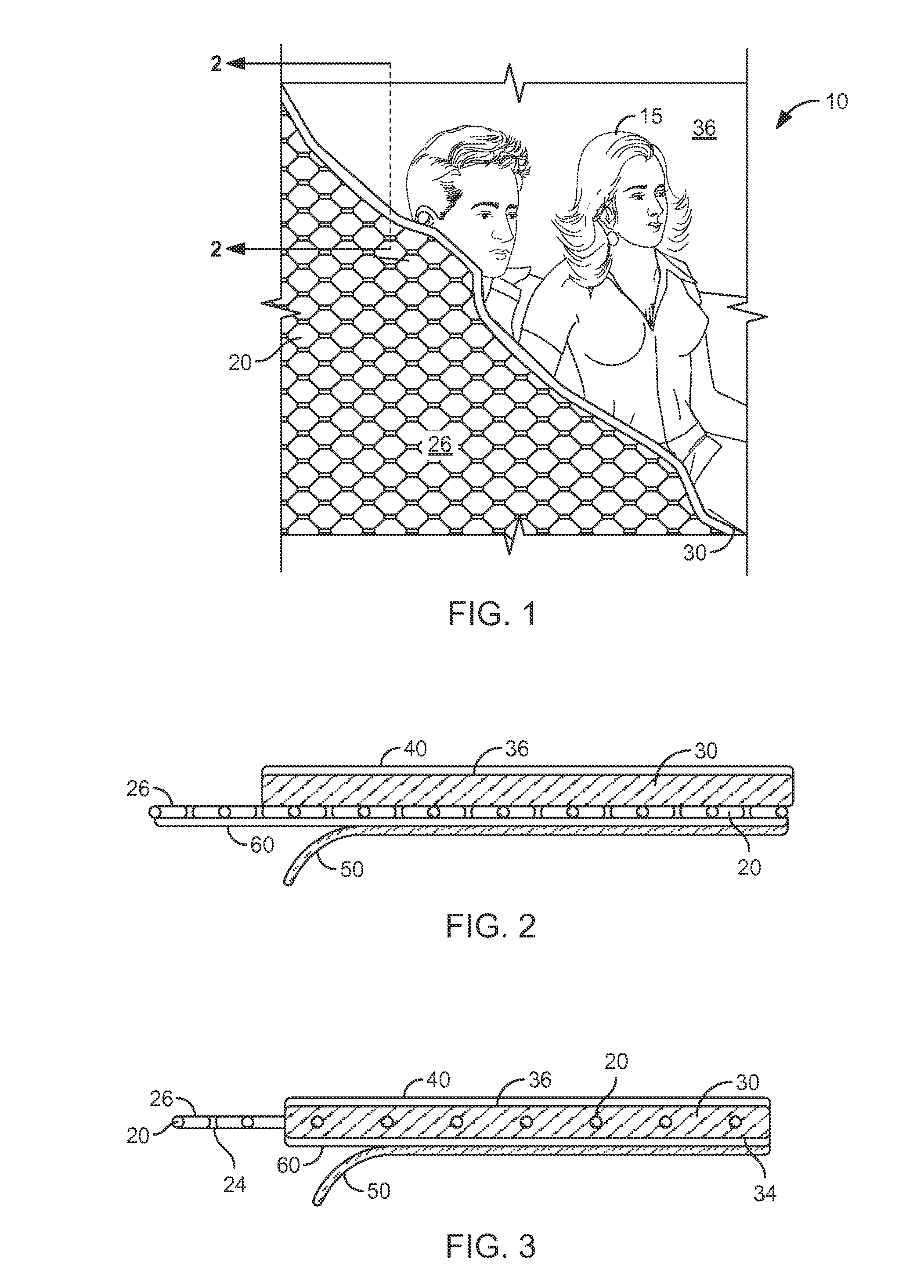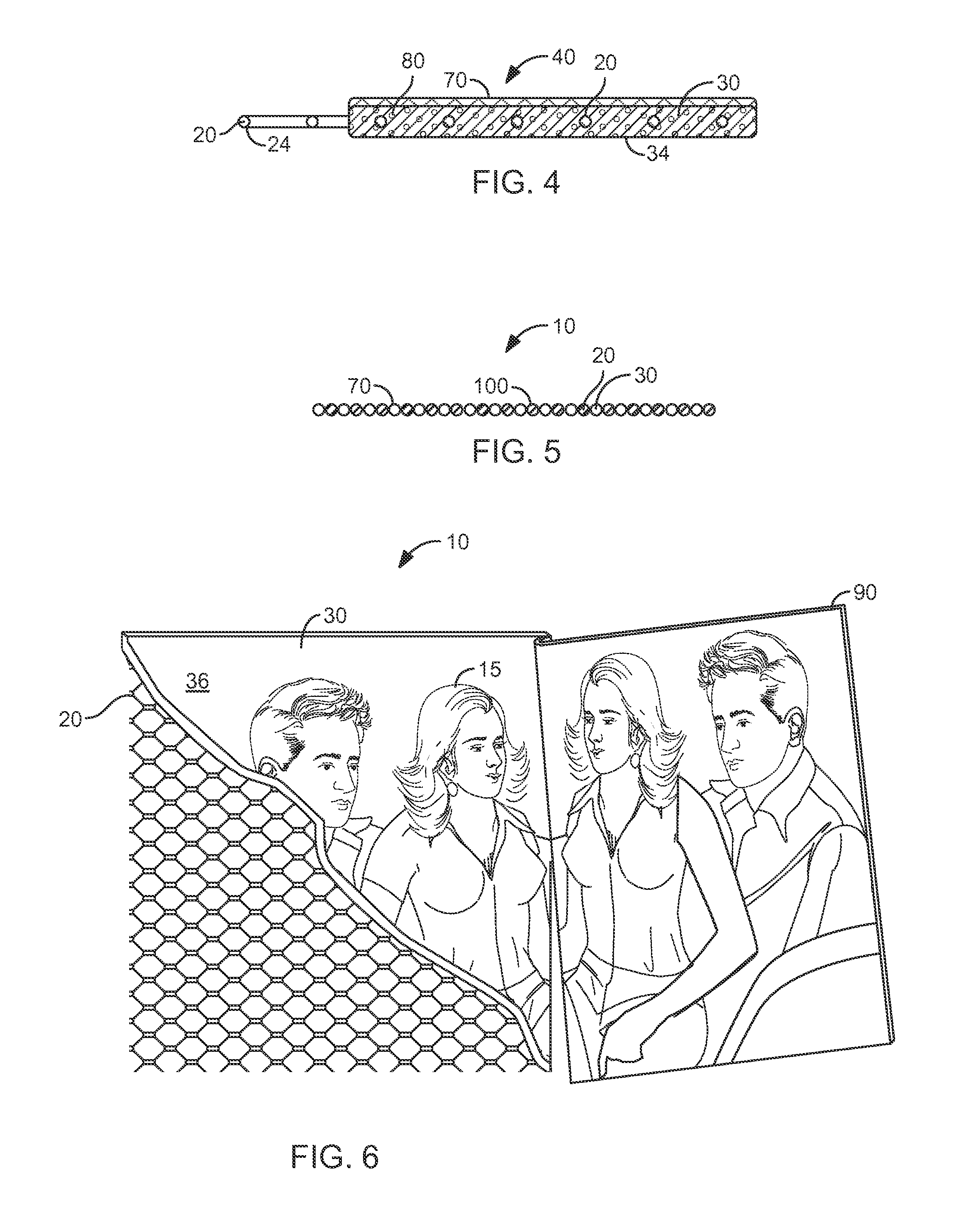Ductile Printed Media and methods of use therefore
a printing media and ductile technology, applied in the field of printing media, can solve the problems of system not being able to produce significant vertical axis shifts in the photographic image without tearing the photograph, and not being able to form a three-dimensional image thereon, and achieve the effect of easy hardening
- Summary
- Abstract
- Description
- Claims
- Application Information
AI Technical Summary
Benefits of technology
Problems solved by technology
Method used
Image
Examples
Embodiment Construction
[0030]FIG. 1 shows a ductile media 10 for receiving an image 15 thereon. The image 15 may be applied using any suitable means, such as an ink-jet printer, a silkscreen process, a heat transfer process, paintbrush, airbrush, spray paint, or the like. The preferred method is by utilizing a heat transfer process such as ink sublimation.
[0031]The media 10 comprises, in the simplest embodiment, a ductile mesh 20 and an elastomeric membrane 30 fixed to at least a top side 26 of the mesh 20 (FIG. 1). The ductile mesh 20 is preferably an expanded metal material, such as expanded metal mesh Material #15AI 17-380 A from Dexmet Corporation, Naugatuck, Conn. 06770, for example. The ductile mesh 20 may alternately be comprised of shape memory alloy wire mesh, such as disclosed in U.S. Pat. No. 5,607,756 to Yamauchi et al. on Mar. 4, 1997. The ductile mesh 20 may alternately be a knit wire mesh 100 (FIG. 5) having warp and weft shape memory alloy wires, for example, which preferably consist of Ni...
PUM
| Property | Measurement | Unit |
|---|---|---|
| ductile | aaaaa | aaaaa |
| superelasticity | aaaaa | aaaaa |
| temperature | aaaaa | aaaaa |
Abstract
Description
Claims
Application Information
 Login to View More
Login to View More - R&D
- Intellectual Property
- Life Sciences
- Materials
- Tech Scout
- Unparalleled Data Quality
- Higher Quality Content
- 60% Fewer Hallucinations
Browse by: Latest US Patents, China's latest patents, Technical Efficacy Thesaurus, Application Domain, Technology Topic, Popular Technical Reports.
© 2025 PatSnap. All rights reserved.Legal|Privacy policy|Modern Slavery Act Transparency Statement|Sitemap|About US| Contact US: help@patsnap.com



